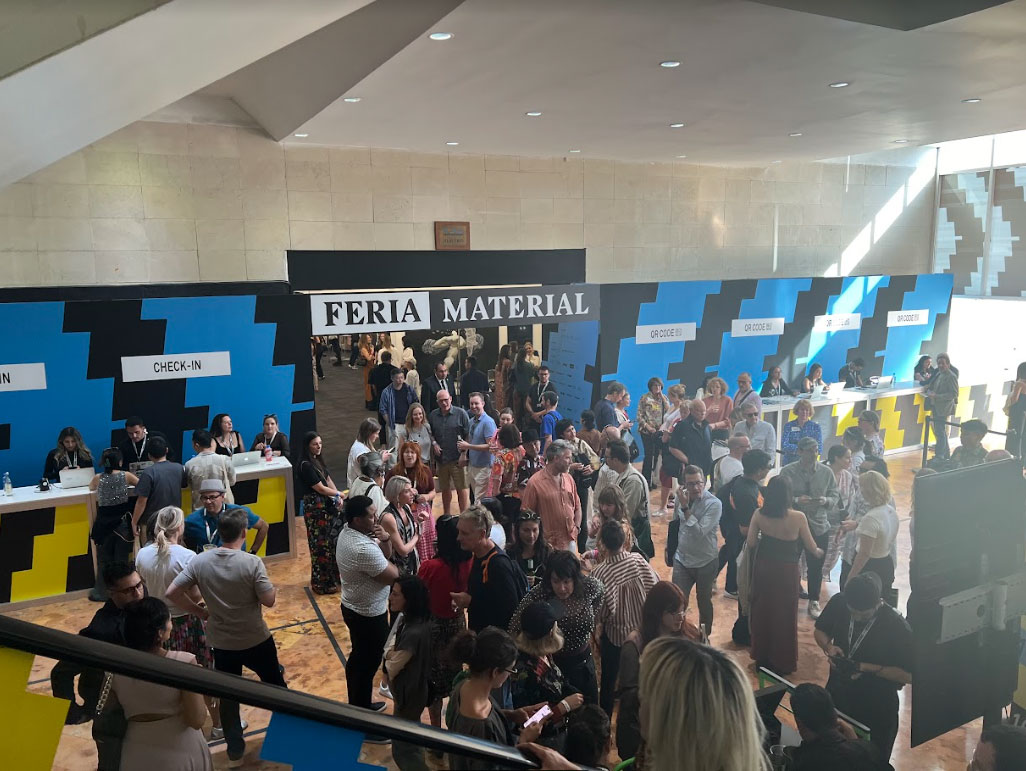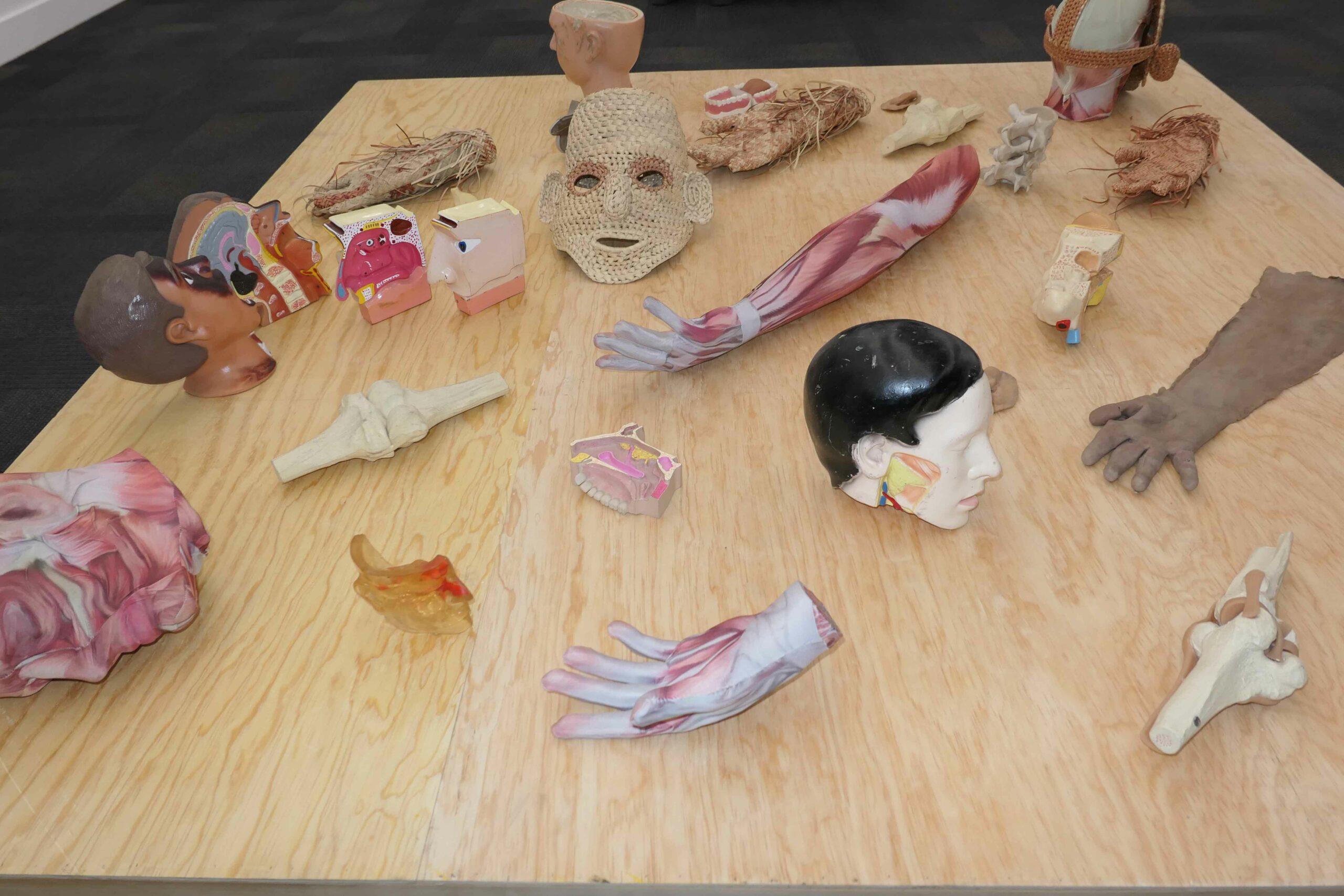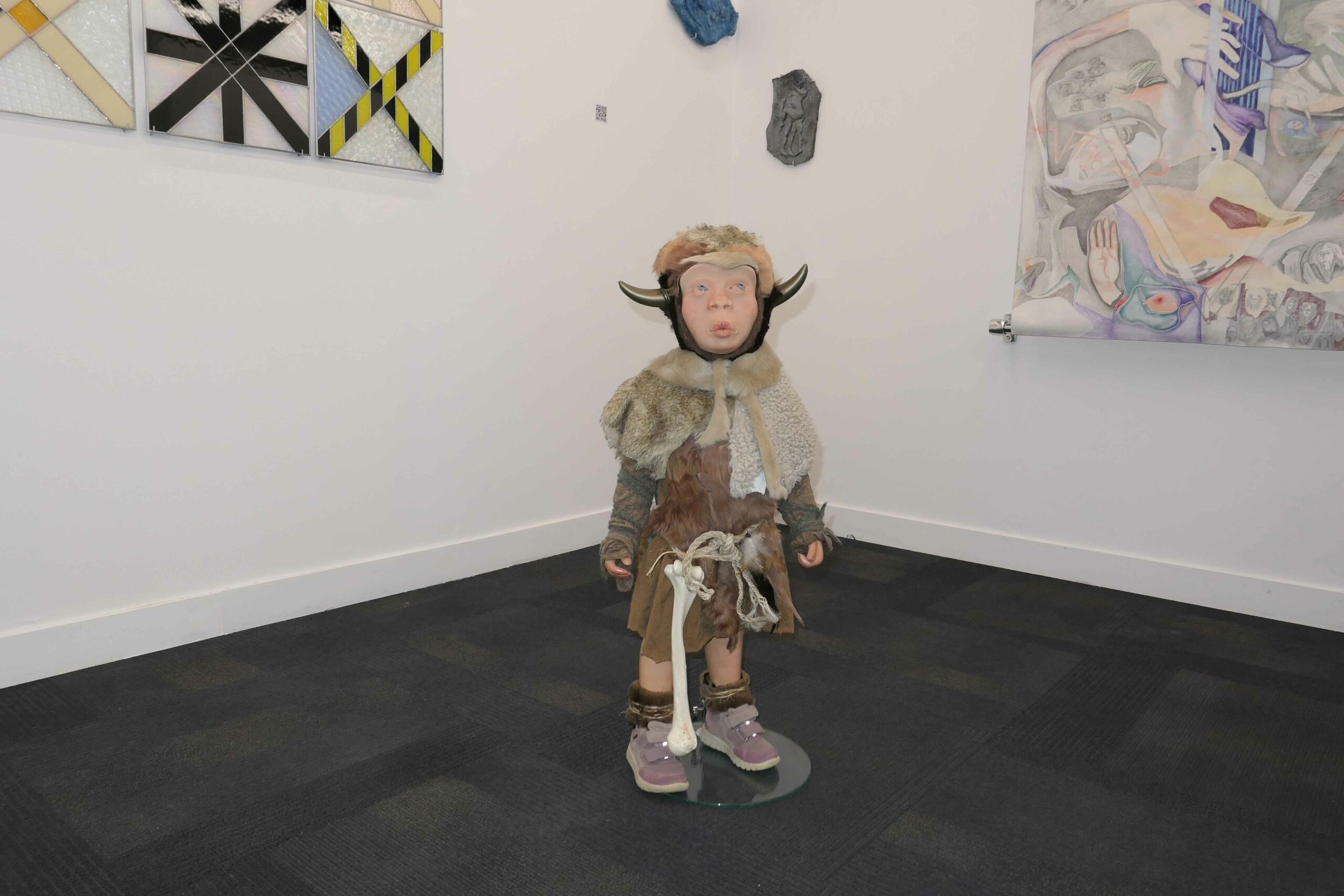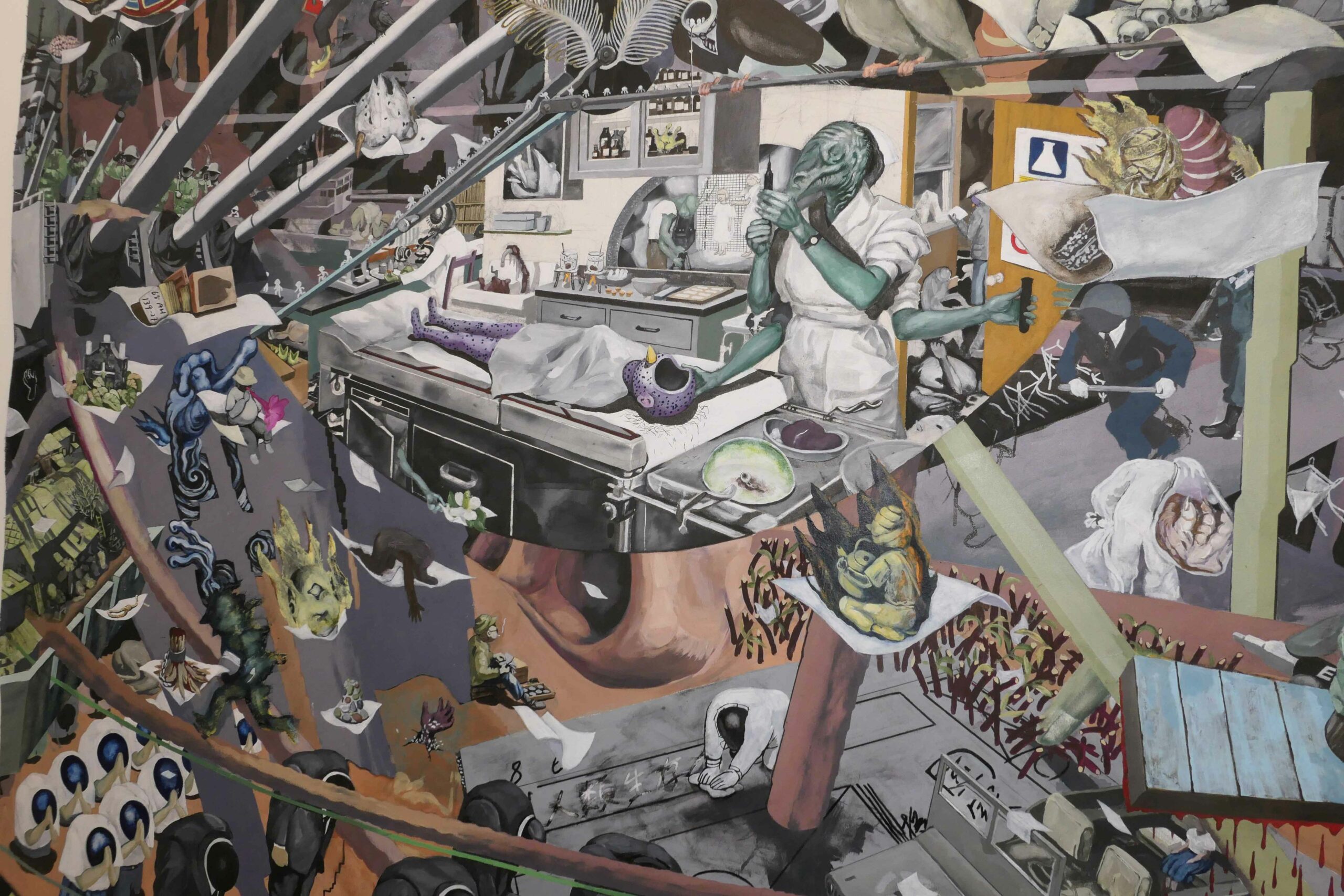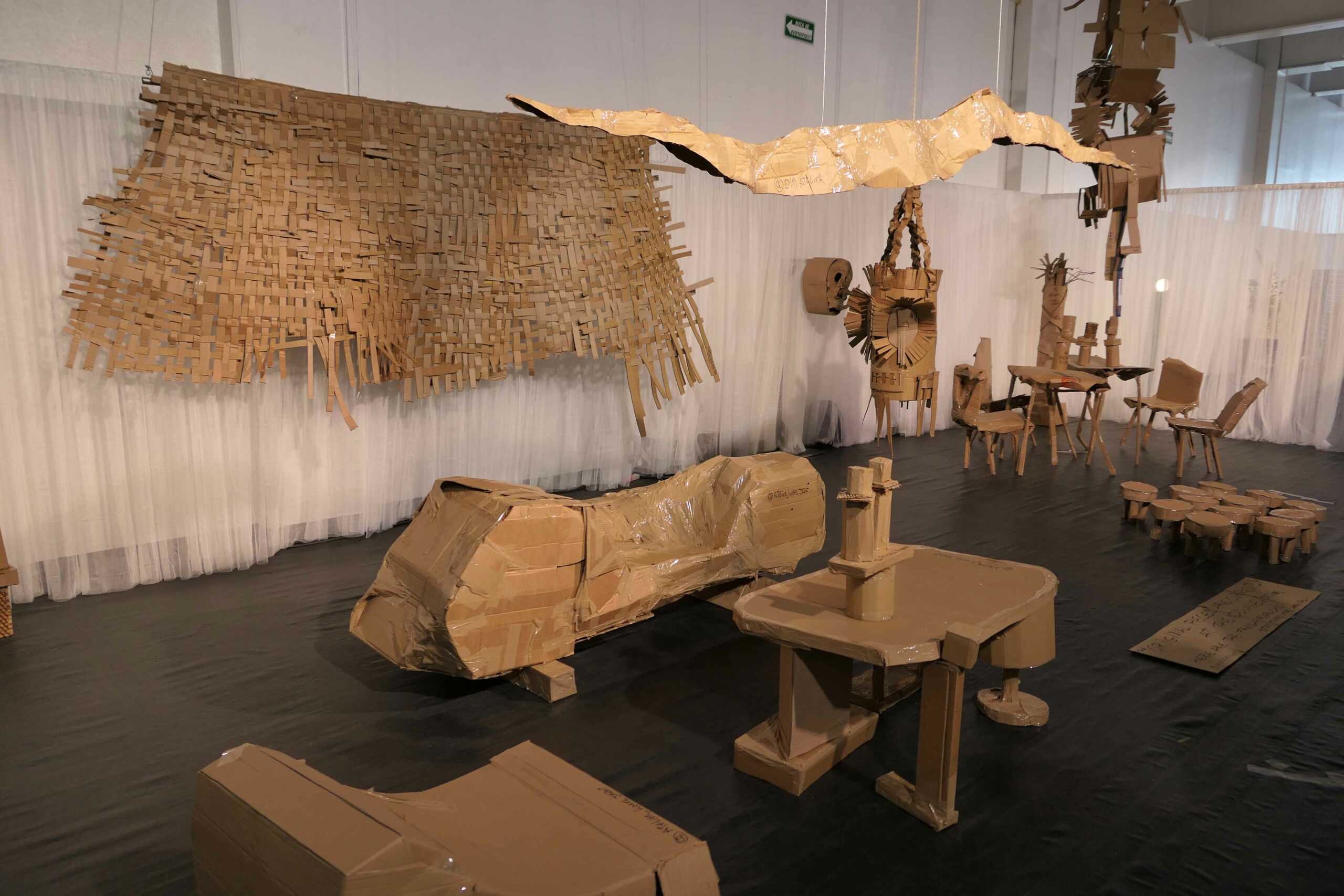Formed collectively by a group of independent, artist-run galleries, Feria Material has been delivering a solid alternative to the Zona Maco art fair since 2014. Under the direction of co-founders Brett W. Schultz and Isa Natalia Castilla and programming director Marcos Ruiz, Material is currently celebrating a milestone 10th anniversary with a fair uniting 73 galleries from 18 countries. While Material’s disruptive, indie spirit is still firmly intact, the fair has clearly expanded and evolved over time, adding components such as Proyectos — a program that provides practical training and exhibition space to organizations and collectives — and securing commercial endorsements such as this year’s Range Rover Lounge in collaboration with the boutique hotel Condesa DF. Although not technically under the Material umbrella, the “nomadic platform” Unique Design X Group took over a full floor of Material’s host venue with booths dedicated to “functional art and collectible design.” After perusing two packed levels of galleries, here are five of the best projects at this year’s Material, which ran from February 8-11 at Expo Reforma.
Erik Tlaseca at Llano (Mexico City)
Working in a broad range of media — from sculpture and installation to performance and video — Mexico City artist Erik Tlaseca mines themes of memory, identity, and transformation. Often working with his own body as a canvas, he’s worn myriad “skins” — including ones woven by Mixtec artisans and others that bring to mind an anatomical science dummy. Delivering cryptic intrigue on the floor of Mexico City-based Llano’s booth, Tlaseca’s installation Algún Día Llegará la Noche (Isla) combined scientific models collected from flea markets — heads, joints and vertebrae among them — as well as hands and a face mask woven from palm leaves in the Mixtec community of San Pedro Jocotipac. In addition to alluding to an island formed by his own dismembered body parts, the piece speaks to Tlaseca’s interest in Xipe Tótec, a resurrection deity whose Nahuatl name translates to “Our Lord the Flayed One.”
Klara Zetterholm at Superinfinit Gallery (Bucharest, Romania)
Drawing from mythology, science fiction, and her own background in stage and set design, Stockholm-based artist Klara Zetterholm creates sculptures and bas-reliefs that tinker with history and explore fantastical narratives. Looking like primate interlopers in Superinfinit’s booth, the child-sized mannequins Jonayla and Urgo are part of an ongoing series Zetterholm initiated in 2020. Riffing on wax models of prehistoric humans found in natural history museums, the diminutive duo donned an odd melange of clothing and accessories seemingly pulled from both contemporary and prehistoric wardrobes. Tellingly, Jonayla and Urgo are named after characters from Jean M. Auel’s series Earth’s Children, which compiles fictionalized encounters between Cro-Magnons, Neanderthals, and humans.
Gaku Tsutaja at Ulterior Gallery (New York)
Commissioned by Nelson Rockefeller in 1933 only to be destroyed that same year as anti-capitalist propaganda, Diego Rivera’s ill-fated mural Man at the Crossroads forms the basis for Japanese artist Gaku Tsutaja’s epic painting Onitaiji: Fall. Originally devised as a triptych and later recreated as Man Controller of the Universe for Mexico City’s Palacio de Bellas Artes, where it can still be seen today, Rivera’s mural flanks a central machine worker with opposing forces of capitalism and communism. Presented as three unstretched canvases, Tsutaja’s Onitaiji triptych replaces the central figure with a four-armed reptilian nurse brandishing a syringe as a beaked, purple figure with a gaping hole in its head awaits an operation. In the surrounding visual chaos are mutated birds, downtrodden figures engaged in thankless labor, and even Kermit the Frog hanging to a rafter for dear life. While Onitaiji can be appreciated as a surrealistic, nightmarish tableau, its subject matter keeps with one of Tsutaja’s key artistic goals: “shedding light on the invisible and suppressed histories and memories of the nuclear age.”
Eleanor Anderson and Michelle Grabner at Abattoir (Cleveland)
In terms of cohesion between artists, Abattoir succeeded with flying colors by pairing Detroit-based Eleanor Anderson and Milwaukee/Chicago-based Michelle Grabner. While bound by craft traditions and a shared love for textiles and domestic hallmarks, the artists work quite differently, with Anderson employing traditional embroidery and soft sculpture techniques and Grabner challenging perception by casting crocheted blankets in brass and bronze. Anchored by a braided rag rug and a garland-like strand crafted by Anderson, Abattoir’s Material booth easily sparked joy with a big wink to DIY culture. Grabner’s humorous take on pantry staples took shape in hand-painted versions of gingham twist-off lids, sardine tins adorned with silver leaf climbing the wall, and a grid of 12 small paintings celebrating Cornelius, the rooster of Kellogg’s Corn Flakes fame.
Zaventem Ateliers at Unique Design X Group (Zaventem, Belgium)
An eclectic incubator situated just outside of Brussels, Zaventem Ateliers is a community of 21 creators, artists, and designers. Although a selection of the group was scheduled to show in conjunction with Unique Design X Group, all their functional and decorative wares got stuck in customs. In a winning example of making lemonade out of life’s lemons, the atelier members created cardboard replicas of all the missing pieces — tables, chairs, stools, vases, hanging fixtures, and a massive woven tapestry. Impressively, their cardboard living room came together in just one day — complete with a sign on the floor explaining, “Original pieces are at customs. Here are the fresh replicas!” Ironically, this impromptu installation looked far more realized than others in the building. “All of us work with our hands,” multi-disciplinary designer Pascale Risbourg explained. “This is what we do.”


